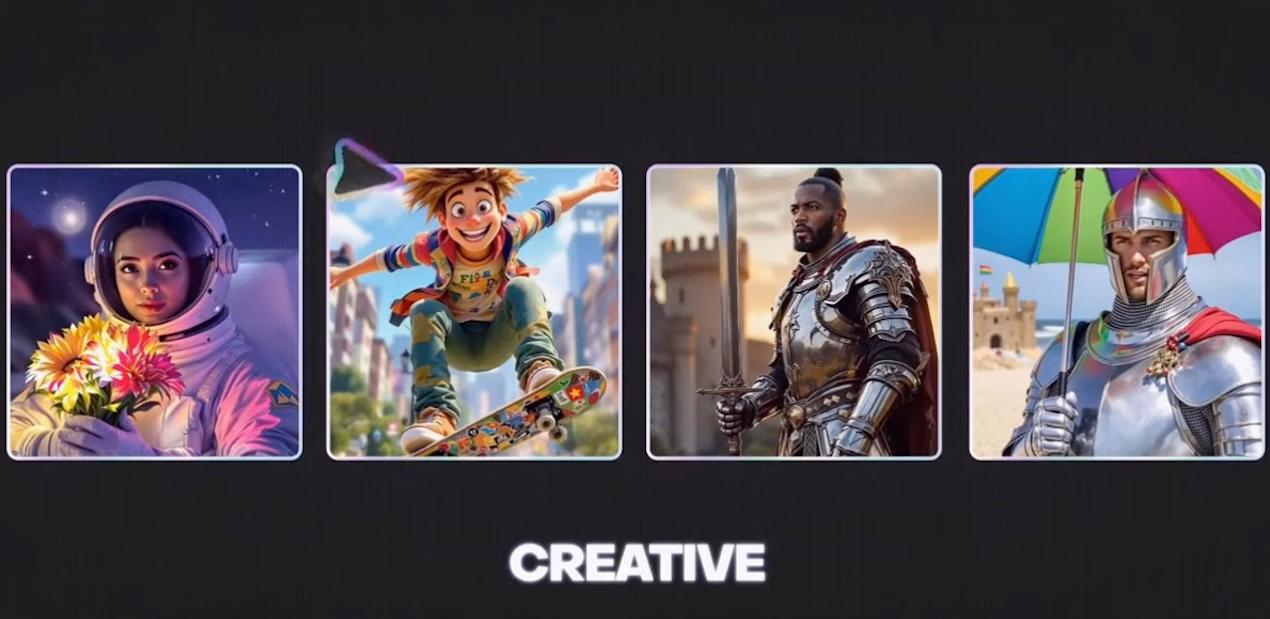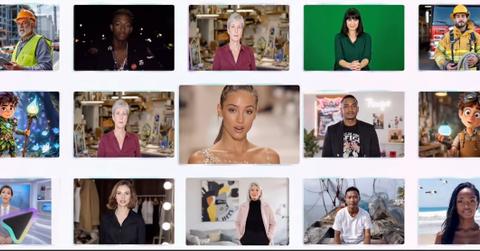Can AI Avatars Make Content Creation More Sustainable? These 3 Tools Say Yes
From cutting travel emissions to reducing production waste, virtual avatars could be the low-carbon future of media.
Published June 4 2025, 2:12 p.m. ET
When you think of content creation, the first image that probably comes to mind is a full-blown production setup—ring lights, camera crews, makeup artists, someone shouting "action" in the background. It's the stuff behind every influencer's morning routine video or that corporate explainer you half-watched on mute.
But beneath the filtered perfection and polished delivery lies a much messier story: carbon emissions from travel, tons of energy spent powering devices, and piles of waste from single-use props and materials. If it all feels a little over the top for a 90-second Instagram clip, well, that’s because it often is.
Enter a quieter, less obvious player in the sustainability conversation: digital avatars that mimic human speech and behavior without ever needing a plane ticket, studio, or even a good hair day. A few emerging tools are making it possible for creators to clone themselves into digital versions, letting them produce lifelike videos with none of the traditional resource drain.
And while that may sound like science fiction’s version of a YouTube tutorial, the sustainability payoff is looking very real.
Cutting Carbon by Staying Put
When you're flying someone out for a shoot, setting up rental equipment, or just commuting to a studio across town, you're leaving a trail of emissions behind—especially if you’re doing it over and over again. One of the biggest ways content creation impacts the environment is through travel.
That doesn’t just mean private jets for celebrities or elaborate brand campaigns; even mid-sized businesses and everyday content creators contribute to the problem when they’re constantly moving people and gear around to get a polished final product.
Now imagine being able to create the same video without anyone having to leave their house. No flights, no rideshares, no setups that need hauling in and out of rented spaces. That’s where the AI avatar steps in. This tool allows creators to upload a script, choose a digital stand-in that looks and speaks just like them, and generate videos that feel personal and direct—all from a laptop.
Instead of booking a shoot day, you can essentially hit "render." And while that might not seem like a huge change for someone just posting casual content, scaled across industries—education, marketing, e-commerce—the environmental difference starts to add up. Multiply that by the thousands of creators who post weekly, and you start to see the bigger picture.
Less Waste, More Efficiency
Let’s talk about all the physical junk that gets left behind during traditional shoots. Every production, big or small, involves some level of waste. Maybe it’s leftover food, disposable water bottles, packaging from wardrobe changes, or just paper scripts and used batteries scattered across the floor. A one-minute TikTok might look effortless, but what’s behind it often isn’t.

When creators switch to virtual production, a lot of that physical mess disappears. No need for rented clothes that get tossed after one use. No piles of unused props. No wardrobe racks, no makeup stations, no cables running everywhere like spaghetti. It’s not just about trimming the fat—it’s about completely rethinking the process so you’re not creating a mess to clean up afterward. Virtual avatars give you that clean slate.
When the work lives inside a screen, the trash stays out of the picture.
Changing the Way We Think About Representation
One thing that’s become increasingly obvious is how visual media shapes the way we see people—and how limited those visuals have been historically. From gender to race to age, traditional media has always favored certain looks, voices, and styles. It’s not just about who gets seen, but who gets hired, who gets to speak, and who gets remembered.
With digital avatars, there’s a chance to break that pattern and give creators more control over how they present themselves. This is especially true for people who may not feel comfortable being on camera all the time or for those who want to create multilingual content without outsourcing. There’s also growing potential for better inclusivity.
For example, some tools let creators adjust features or vocal tone to reflect more diverse identities or to better connect with specific audiences—like male influencers in sustainability who might otherwise be underrepresented in media geared toward environmental issues. These changes aren’t just cosmetic. They’re opening the door to a broader mix of storytellers, ones who may have been left out of the conversation before.
Smarter Tools Mean Smaller Footprints
Some of the newer platforms on the market are designed to do a lot of the heavy lifting for you. With just a few clicks, you can go from a written script to a full video complete with lifelike motion and voice, and the process doesn’t demand powerful computing equipment or professional editing skills.
One of the more talked-about tools lately is HeyGen.com, which lets users create custom avatars and plug them into scenes to deliver pre-written lines. It’s like having a personal actor who’s always camera-ready, never calls in sick, and doesn’t require lighting checks.
Because it runs in the cloud, there’s no need to install bulky software or burn through electricity just to render one short video. This matters more than people realize. Even if you're not flying across the country, the energy it takes to run traditional editing software and store high-resolution media files still has an environmental cost. Cloud-based tools that handle those tasks more efficiently keep the emissions down while speeding the workflow up. And that’s especially appealing to teams trying to balance sustainability goals with budget constraints.
Fewer Barriers, More Access
Another benefit worth pointing out is how these tools level the playing field. Not everyone has the money, time, or connections to produce high-quality video content the traditional way. And when you remove those obstacles—studios, crews, travel—you make it easier for people to share their ideas without needing a massive support system behind them.
This isn’t just about individual influencers or creators trying to go viral. Small businesses, educators, healthcare workers, and even non-profits working in climate and environmental causes now have a way to communicate through video without adding to the emissions problem. They don’t have to sacrifice clarity or creativity either.
The quality of these digital avatars is getting better by the month, which means you can get your message across without having to settle for less-than-professional results. At the same time, it encourages a more thoughtful approach to what we’re producing and why.
Why This Shift Matters
Digital avatars aren’t going to replace every single video shoot or eliminate the need for live-action storytelling altogether. There will always be a place for human connection and real-life moments. But as we start to look for ways to reduce our environmental impact in all areas of life, this is one shift that makes sense.
It’s not just a tech trend—it’s a way to rethink content from the ground up. And when creators can work smarter, cleaner, and faster without compromising quality, that’s a future worth leaning into.
